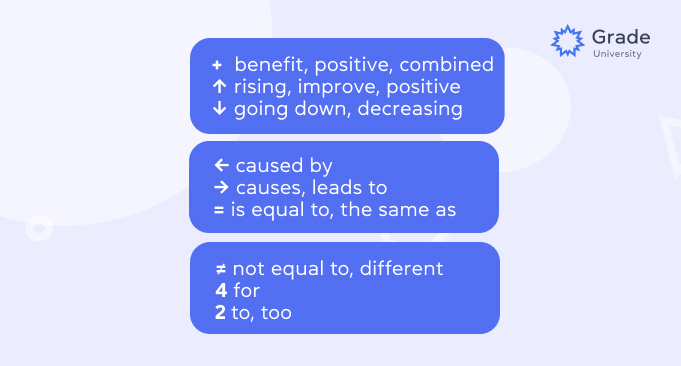Using Authentic Materials for Teaching Listening and Reading
- Listening
- Reading
- Tips & Strategies
- Methodology

02.10.2024
While teaching English, I've noticed that learners often excel in the receptive skills, listening and reading, compared to the productive skills, speaking and writing, with occasional exceptions.
Despite listening being relatively easier for many learners, the process still can be enhanced when students recognise different types of tasks.
This awareness allows them to become more conscious listeners, able to shift focus and activate the necessary learning strategies depending on the specific listening task.
Practicing the listening skill in a lesson typically involves the following steps:

Pre-listening stage is fast paced. Its aim is to get students interested in the listening itself. It may involve:
For example, if the listening is about travelling, students could brainstorm items they typically pack or types of holidays.
Learners look at a visual and predict what the listening may be about.
Students may be asked to answer a question which encapsulates the listening passage, e.g. What do you know about the history of space observation?
If certain words in the audio may hinder completing the task, their meanings should be clarified beforehand.

Teach listening with confidence
Join our courseWhile-listening stage focuses attention on developing sub-skills such as listening for gist (the main idea), listening for specific information, inferring, listening for detail, participating actively, note-taking, dictation, listen and do.
Performing a task while listening enhances comprehension and the results serve as evidence of understanding.
Post-listening stage is the time when students compare and justify their answers while a teacher provides correct ones.
This is also the time to identify which parts of the audio script need additional clarification.
Additionally, the listening task can serve as a springboard for focusing on specific grammar constructions, vocabulary, or extending the topic through further speaking or writing practice.
Students are usually asked to listen for gist when listening to an audio for the first time. Thanks to this task, they grasp the speaker’s overall message.
Some typical gist tasks are:
What issue are they discussing?
Who is the customer talking to?
Did they enjoy the film they saw?
Look at the pictures. Which place are the speakers discussing?
When students listen for the second time, they may be asked to listen for specific information.
The sub-skill involves focusing on a particular detail rather than understanding everything.
For example, in real life, when listening to train announcements, we concentrate on the details about the train we need to catch and ignore the rest.
Listen to the dialogue and complete the form below:
Name: Victoria 1 ..........................
Nationality: 2 ..................
Email address: 3................@gmail.com
The main focus of the task is to notice the target language in speech.
Teacher: Create a story using the useful phrases. You have 7 minutes to prepare.
7 minutes later: Now share your stories with each other. Note down the useful phrases your partner has used. Suggest improvements, if necessary.
Pronunciation tools for ESL teachers
This sub-skill refers to the type of listening that we do when we wish to go beyond what is actually stated, for instance, we want to know how the speaker feels.
The sub-skill can be helpful in CAE test listening part 4.
In the task you need to infer how the person feels about the new job.
The wording doesn’t give you the direct answer.
You must infer that the speaker is ‘happy to feel in control.’

Listening for detail refers to the type of listening we do when we need to find errors or determine differences between one passage and another.
We can’t afford to ignore anything because we don’t know exactly what information will help us to achieve our task.
A teacher tells the story twice.
The second time a number of details are changed. Students must spot the differences.
Version 1 Yesterday was Ellie’s mum's birthday. She wanted to bake a strawberry cake for her. First, she went to the market to buy some flour, sugar, eggs, and strawberries. When she got home, she mixed all the ingredients in a bowl. Then, she poured the mixture into a round pan and put it in the oven. After 30 minutes it was ready. When the cake cooled, she added some frosting on top. When her mum came home and saw the cake, she gave Ellie a big hug. They ate the cake together, and it was delicious. | Version 2 Yesterday was Ellie’s sister's birthday. She wanted to bake a chocolate cake for her. First, she went to the store to buy some flour, sugar, eggs, and cocoa powder. When she got home, she mixed all the ingredients in a bowl. Then, she poured the mixture into a square pan and put it in the oven. After 35 minutes it was ready. When the cake cooled, she added some frosting on top. When her sister came home and saw the cake, she gave Ellie a warm smile. They ate the cake together, and it was tasty. |
Active participation might include transferring what is heard from one medium to another, such as onto paper.
The activity enables students to practice names of rooms and objects in them.
Teacher: Prepare the description of your favourite room in the place where you live. You have 3 minutes for preparation.
After 3 minutes: Now listen to your partner’s description and draw the objects in the room. Then swap roles.
Feedback: Does your partner’s drawing look like your favourite room?
ESL conversation topics for adults
This exercise allows students to practice phrases for giving directions.
Student A is given a map with certain places in town, while Student B has the same map but with different places.
Both start at the railway station.
Student A explains where, let’s say, the supermarket is located and how to get there.
Student B traces the route on the map and marks the supermarket's location. Then they swap roles.
Finally, students check each other’s maps to see if the places were marked correctly.
Students complete a pie chart based on what they hear.
A pie chart is a circle divided into slices, like a pie.
They have to interview each other on their daily activities and how much time is spent on them.
The ‘slices’ may include eating, sleeping, travelling, etc.
This activity helps practice listening skills, gerunds and phrases for daily activities.
Adapted from J.J. Wilson. How to Teach Listening, Pearson Education Limited, 2008, p. 87.

Teacher: ‘I'm going to tell you a story about a day in the life of a boy named Timmy. As I tell the story, I want you to interrupt me with questions in the past simple tense. Ready?’
Teacher: ‘It was a sunny morning, and Timmy had a big smile on his face.’
Student: ‘Why did he smile?’
Teacher: ‘It was the first day of his summer holiday, and he was excited to have a lot of fun. He took the lunch that his mum made for him and went…’
Student: ‘Where did he go?’
Teacher: ‘He went to the playground. He met his friends there. After playing, they had a picnic. Timmy ate a sandwich and some fruit. Then…’
Student: ‘What did they do after the picnic?’
Teacher: ‘After the picnic, Timmy and his friends played football. Timmy scored a goal. Later, Timmy and his friends saw an ice cream truck. They bought some ice cream. Timmy chose chocolate flavor. Then…’
Student: ‘What did Timmy do after eating ice cream?’
Teacher: ‘After eating the ice cream, Timmy and his friends decided to go to a nearby park. They saw some interesting plants and birds there. Timmy found a colorful butterfly and took a picture. It was getting late. Timmy said goodbye to his friends and walked home. When he got home…’
Student: ‘What did Timmy do when he got home?’
Teacher: ‘When Timmy got home, he told his mum all about his wonderful day.’
Based on content generated by ChatGPT (OpenAI), with modifications.
Idea adapted from J.J. Wilson. How to Teach Listening, Pearson Education Limited, 2008, p. 87.

10 cool tips from CELTA tutors
To the listIt’s a valuable sub-skill in both everyday situations and academic settings.
Whether during phone calls, meetings, or lectures, the goal is to create a written record of information that can be used for future reference, study, or review.
Listen to five people talking about recoveries. Take notes about the injuries and illnesses they had.
Jonathan Bygrave, Hugh Dellar and Andrew Walkley. Roadmap B2+, Pearson Education Limited, 2020, p.14.
To enhance their note-taking skills, students can use various techniques, such as:

For example:
w with
v very
Omit vowels and keep key consonants.
Consonants are more effective for recognizing words.
yr year
mngmnt management
dfntn definition
Spaces can denote changes in topic or mark new sections.
They offer us ‘breathing space’ from the density of the page, making it easier to review our notes later.
The following activities are suited for offline classes with young learners who yearn to move around.
A text is stuck on a wall out of the view of students.
In pairs, students choose a runner and a scribe.
The runner memorises a chunk of text, runs to the scribe, and dictates it.
After a minute or two, roles switch.
The activity is lively, with students running back and forth.
Adapted from J.J. Wilson. How to Teach Listening, Pearson Education Limited, 2008, p. 93.
If students share the same first language, it’s possible to use the activity to raise awareness of false friends (words that look the same as words in the first language but have different meanings).
For Ukrainian speakers, frequently confused words may include a shop and a magazine, fabric and a factory, white bread and a baton.
The procedure is the same as ‘Running dictation,’ but the text is in the students' language.
The runner translates phrases into English for the scribe.
In the end, students compare translations and discuss nuances.
Adapted from J.J. Wilson. How to Teach Listening, Pearson Education Limited, 2008, p. 93.
To prepare for the speaking part of the test, students can use the following activity.
Record an answer to a sample question on your phone, transcribe it, improve it, and give an enhanced answer.

How to develop learner autonomy in an English classroom?
Find outThese activities are also more suited for young learners.
To practice the imperative mood, students are asked to perform an action they hear.
Open the book.
Jump up.
Take a pencil.
Point at the photo.
Don’t be serious. Smile.
Don’t sit. Stand up.
To practice a certain grammatical tense, for example, the present perfect.
Teacher: Stand up if you have ever played volleyball.
3 students stand up.
Teacher nominates one of them to give an instruction using the present perfect tense.
Student 1: Stand up if you have ever eaten vanilla ice cream.
The student nominates one of the students who stood up.
Student 2: Stand up if you have ever been abroad.
Adapted from J.J. Wilson. How to Teach Listening, Pearson Education Limited, 2008, p. 94.
Listening sub-skills are practiced at:
Yuliia Ivanii
Author
Teacher of General English, Young Learners, Exam Prep
Comments
Leave your comment